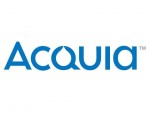This interview is an excerpt from GovLoop’s recent guide, The DoD of Tomorrow, which explores how the department is transforming its operations, technology, workforce, and acquisitions process to confront 21st century challenges.
When you think of DoD’s information infrastructure, you might think mostly of complex, secret networks. Yet the reality is that the department maintains thousands of public-facing websites to inform the civilians and personnel alike. What’s more, keeping those portals functioning and up-to-date can be as challenging of a task as any other defense operation.
To understand how DoD might achieve this task, we spoke with Dan Katz of Acquia, an open source digital platform solutions and services provider. He explained how embracing an open content management system (CMS) and digital cloud platform offers DoD the agility to securely respond to changing needs and environments, as well as gaining efficiencies and saving taxpayer dollars.
Simplifying Website Management
The most obvious benefit of an advanced CMS is its ability to streamline website management. “An open cloud platform allows DoD to consolidate multiple sites and standardize on a proven robust technology stack,” said Katz. “For example, the Navy has thousands of websites, on a variety of different technology stacks, and they’re actively looking for easy, cost effective models for managing and deploying those.”
One of the difficulties in managing those multiple websites is the breadth of their complexity. Katz said a fleet commander website could be as simple as six pages while other sites could comprise hundreds of pages. “They’re spending a tremendous amount of tax dollars on software licenses as well as on the resources to manage these,” he said.
Using services such as Acquia Cloud Site Factory allows organizations to manage multiple websites with less difficulty. “Standardizing on an open digital cloud platform would allow the Navy and any DoD organization to centrally manage sites based on common templates,” Katz said. “It would allow them to centrally procure cloud platform services, and it would also allow non-IT users and content managers who are moving around to different posts to not be dependent on IT when a new site needs to be spun up.”
Maintaining Agility
This usability by non-IT personnel is the key to the cloud platform’s second benefit, agility. “The biggest benefit of choosing an open platform is you have tremendous innovation and agility advantages, so that you can quickly adapt to changing conditions,” said Katz. “No organization as much as DoD needs to be able to do that.”
Content managers are able to update content as soon as conditions or environments change, ensuring they meet the most pressing information needs. At the same time, “Those freed-up IT staff can be focused on innovating and providing mission critical solutions for the warfighters,” said Katz.
Securing Public and Private Networks
While these content and operational benefits are necessary for DoD to remain relevant, some officials may be hesitant to adopt an open solution due to security concerns. However, Katz said these concerns are unfounded.
He explained that using open cloud platforms does not require exposing your entire network. “If I were DoD, I wouldn’t want every site visitor traversing my network to see public information. One of the primary benefits of a cloud platform would be to keep the public outside of my network,” he said.
Moreover, department leaders are already putting safeguards in place to ensure that open platforms can be used to their fullest potential without sacrificing security.
“The new DoD CIO, Terry Halvorsen, is now accepting FedRAMP, which is the civilian government standard for cloud security, for DoD levels 1 and 2. That’s the equivalent to a FISMA moderate accreditation,” explained Katz. “Public facing websites with non-sensitive data can live on those cloud platforms and be completely segmented from internal networks in DoD. If there is a need to have some integration to other systems in DoD, cloud platforms like Acquia can use VPN and VPC technologies to have a secure end-to-end isolated network connection between the public cloud and DoD networks like NIPRnet and the Defense Research Engineering Network.”
Partnering for Success
What’s more, service providers like Acquia can help ease the transition and maximize outcomes. “An organization can’t just go ahead and download Drupal and start implementing this at an enterprise level,” said Katz. “You really need to be conscious about choosing a partner that has experience with the technology and knows how to implement it in an enterprise environment like DoD.”
This partnership is imperative not only from a security perspective but also from an organizational change perspective. “It’s not just a technology issue,” Katz said. “There are governance issues and people issues that are often times the most complicated and challenging. Only a vendor that has that experience is going to be able to help DoD be successful.”
Open source cloud platforms are the way forward for DoD. However, the department doesn’t have to undergo this transition alone.

Photo Credit: Flickr/U.S. Department of Defense




Leave a Reply
You must be logged in to post a comment.